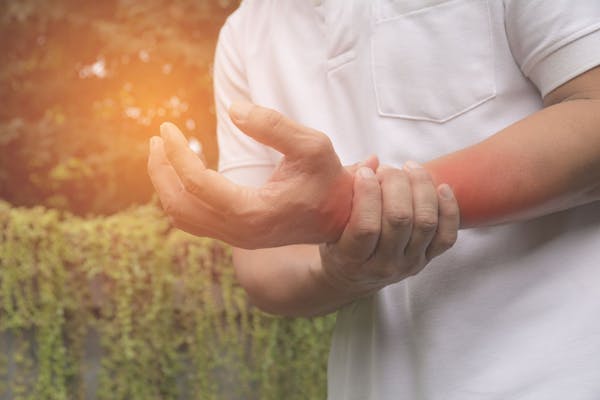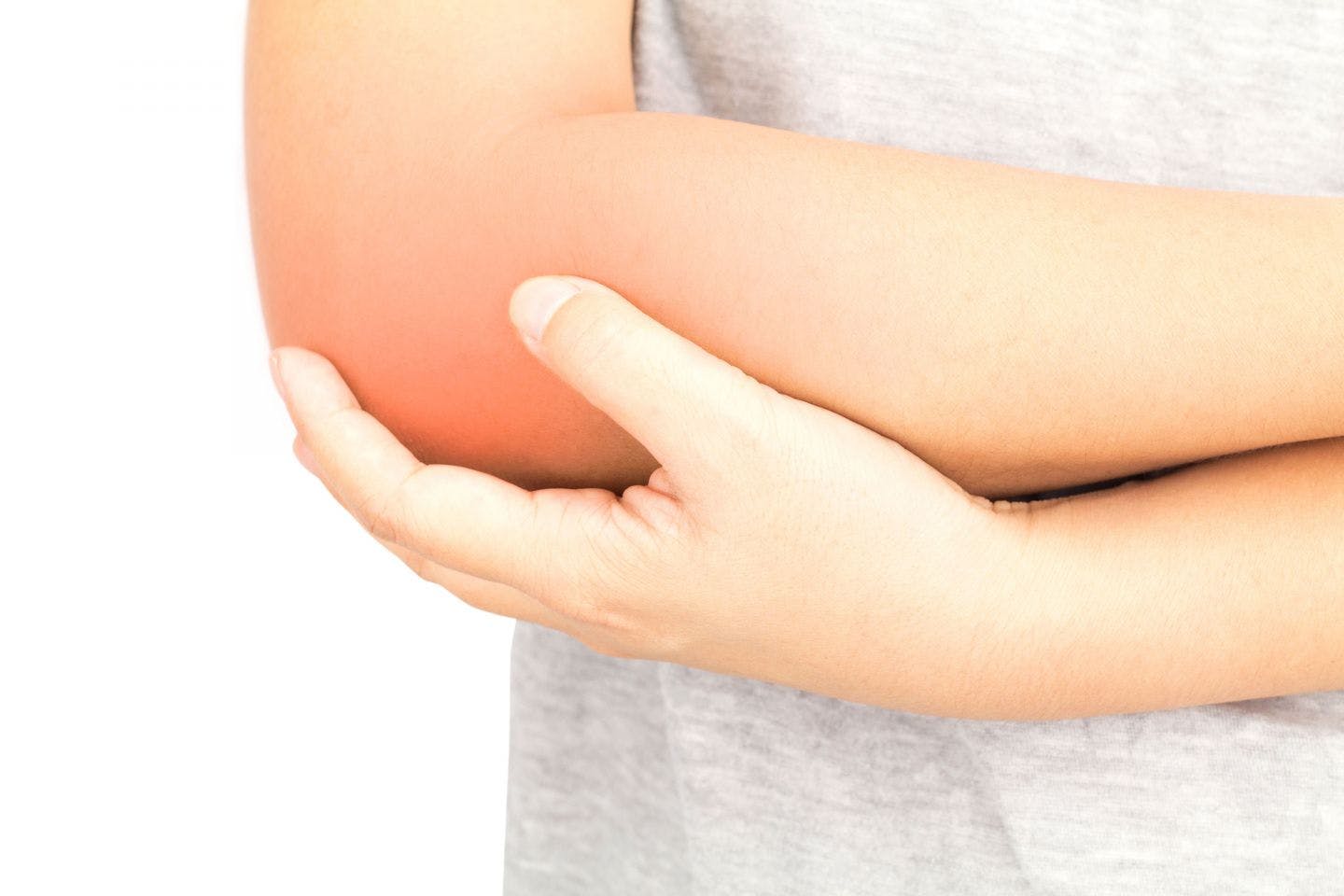
Our hand therapy services are provided by experienced, skilled, occupational therapists. Our therapists work one-on-one with patients using compassion, creativity, and advanced therapy techniques, in a comfortable environment, to help patients achieve their goals and restore function. Individually designed therapy programs are carefully developed for patients with injuries and/or medical conditions related to the shoulder, elbow, wrist, hand and digits.
Services may include the following:
- Evaluation (pre- and post-op)
- Splints (custom & prefabricated)
- Patient/Family Education
- Written Home Programs
- Wound Care
- Kinetic Taping
- Thermal and Electrical Modalities
- Strength & Endurance Training
- Injury Prevention Programs
- Scar and Pain Management
- Edema Control
- Manual Therapy Desensitization

Fractures/Dislocation Elbow
Elbow fractures usually involve a fall onto the outstretched arm or a direct trauma to the elbow. With elbow dislocations there may be associated nerve and/or blood vessel injuries. X-rays may show the fracture or dislocation but small breaks may be difficult to see.
Fractures are an emergency and immediate reduction (or placing the bones together to allow healing) is necessary. Bone breaks within the joint need special attention to ensure recovery of proper function of the joints.
Loose Bodies
Loose bodies are usually the result of old injuries or osteoarthritis of elbow joint. Locking and pain are the predominant signs and symptoms. The condition may be treated by surgical removal of the loose bodies if conservative care fails.
Ulnar Nerve Injuries
This injury is usually the result of excessive valgus stress on the elbow during repeated throwing (especially during the cocking phase of a throw). Sometimes a direct injury to the nerve within the cubital tunnel (“hitting your funny bone”) will result in nerve damage. Symptoms include tingling and numbness in the ring and pinky fingers. This may occur during or after throwing or with prolonged bending of the elbow.
Changing throwing technique, bracing if necessary, and therapeutic exercise may be helpful. If the problem persists, or there is prolonged weakness, then surgery is indicated.
Biceps Rupture at the Shoulder/Elbow
This injury is usually the result of a sudden forceful straightening of the elbow during concurrent contraction of the biceps muscle. Typically, there is sudden forearm pain and weakness. Surgical repair is necessary.
Post-surgical rehabilitation can be helpful with the recovery of range of motion, strength, and function.
Distal Triceps Rupture
Sudden forced bending (flexion) while the elbow is being straightened (extended), is a common mechanism. As with biceps rupture, surgical repair is necessary.
Golfer's Elbow (Medial Epicondylalgia)
People that suffer from golfer’s elbow are often involved with racquet sports or golf. As with tennis elbow, they may overuse the forearm, traumatize the elbow by hitting several “fat” golf shots, or have poor swing technique.
Pain at the inner aspect of the elbow and reproduction of symptoms with resisted wrist flexion are common.
Activity modification, anti-inflammatory medications, ice, and progressive stretching and strengthening will relieve most cases. Surgery is only an option in recalcitrant cases.
Tennis Elbow (Lateral Epicondylalgia)
Lateral (meaning away from the midline of the body) epicondylalgia (meaning pain of the epicondyle) is a painful condition on the outer aspect of the elbow. The common name for lateral epicondylalgia is tennis elbow but only 5% of the people afflicted with this condition play tennis.
Pain at the elbow may have one or more causes: it could be from the forearm tendons that attach at the outer aspect of the elbow, it could be referred pain from the next, it could be from one or more of the joints at the elbow, or it may originate from the radial nerve that is in close proximity to the elbow joint.
It often occurs with repetitive use of the arm especially with a clenched fist. Most cases are not due to tennis.
Local tenderness and pain with resisted and passive extension of the wrists is common.
Activity modification, anti-inflammatory medications, ice, and progressive stretching and strengthening will relieve most cases. Surgery is only an option in recalcitrant cases.
